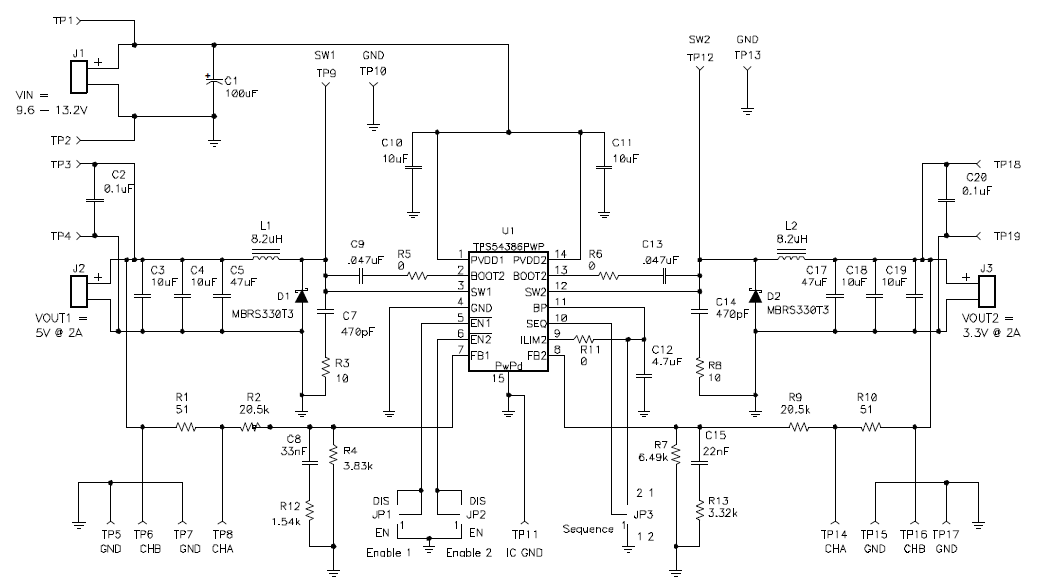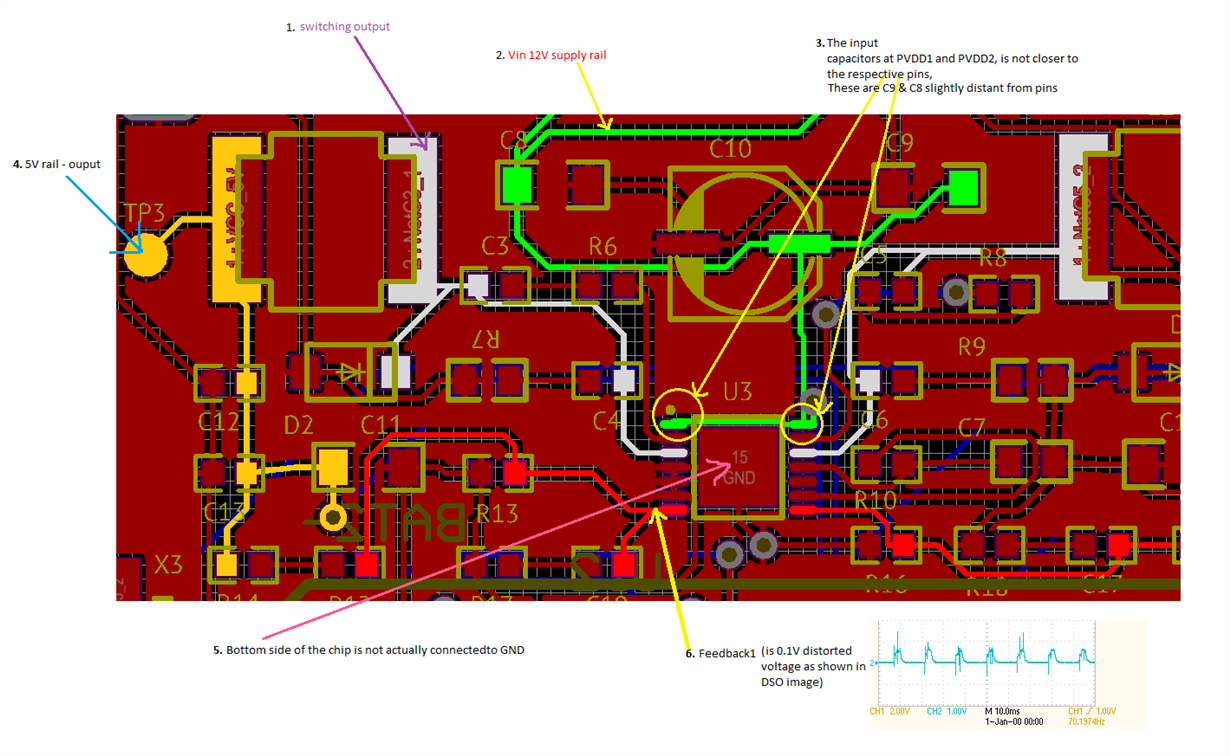Dear sir,
We are in the middle of designing a product prototype which uses TPS54386PWPR for a dual power supply, Vin 12V to Vout 5V & 3.3V with maximum load current 2A each. But we are facing a problem in getting output- 5V and 3.3V. instead, getting approximately,
2.4V @ 5V output side and
1.5V @ 3.3V output side
We have adopted the schematic diagram from TPS54386EVM user guide and also used ti design tool, in choosing components values, types, voltage rating etc. (with reference to the section in , TPS54386EVM user guide, page number 5. www.ti.com/lit/ug/sluu286/sluu286.pdf )
Test conditions:
1. Vin = 9.4V DC
2. SEQ left floating.
3. ENx, both are connected to GND.
4. Pin ILIM2 connected to pin BP
5. Diode is B330A-13-F, slightly different from reference design, but specification is (Peak Repetitive Reverse Voltage) Vrrm =30V Output current, Io =3A
Please note down the observations on various test points(TP):
Output:
2.4V @ 5V output side (Very less than required voltage 5V)
1.5V @ 3.3V output side (Very less than required voltage 3.3V)
Voltage @ FB1 & FB2:
Voltages at FB1 & FB2 are not perfectly DC voltage of 0.79V , but Approximately 0.1V. Please note down the DSO images below for your ref.:
CH1(Yellow) : Voltage waveform @ Output 5V side,
CH2 (Blue) : Voltage waveform @ Pin FB
Please help us with your valuable feedback as we are unable to proceed further.
Sunil Kumar NK




